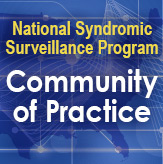Nebraska Assesses the Use of Non-Traumatic Dental Care in Emergency Departments
Updated August 23, 2023

For more than a decade, Nebraskans have increasingly sought non-traumatic dental care in emergency departments (EDs) instead of receiving less costly care in a dentist’s office. The Nebraska Department of Health and Human Services (DHHS) wanted to know why people were going to the ED instead of a dentist.
To get answers, epidemiologists with the Nebraska DHHS turned to ED data to search for non-traumatic dental conditions, the patient demographics of people seeking dental care in EDs, and the reasons for these visits.
They found that ED use for non-traumatic dental conditions is widespread, putting an economic burden on Nebraska. Such findings are now being used to develop policies and interventions to ensure that people can receive routine dental care without going to EDs.
Public Health Problem
For more than a decade, some Nebraskans have used emergency departments (EDs) for treatment of non-traumatic dental conditions instead of receiving less costly care in a dentist’s office. In Nebraska, 52 of 93 counties have a shortage of dental care facilities and at least 20 counties lack full-time dentists. A study based on 2009–2016 Nebraska Hospital Discharge data shows an average of 7,982 visits for non-traumatic dental conditions per year. The average cost per emergency room visit for dental conditions increased from $712 in 2012 to $1,912 in 2018. Nebraska sought more information to develop a solution to this public health problem.
Actions Taken
Because EDs in the states are required to report data to the Nebraska Department of Health and Human Services (DHHS), these data are readily available to search.
An oral health epidemiologist, with Nebraska DHHS, built an ESSENCE* definition to identify non-traumatic dental conditions, patient demographics, and reasons for these visits. The query definition uses:
- discharge-diagnostic codes (based on Association of State and Territorial Dental Directors guidelines) and
- chief complaints (using primary search terms for dental terminology).
To assess the thoroughness and quality of the definition, epidemiologists manually reviewed 500 random records matching the definition. Then they categorized those records as related, unclear, or unrelated to non-traumatic dental conditions. Additionally, they studied Nebraska ED records reports, representing 40% of total Nebraska EDs.
Outcome
After applying the definition to examine Nebraska ED data, oral health epidemiologists identified 10,433 visits to EDs from January 2017 through December 2018 that were potentially related to non-traumatic dental conditions. On review, 85% were related to non-traumatic dental conditions, 12% were unclear, and 3% were unrelated. The highest percentage of ED visits for non-traumatic dental conditions was observed in females (55%), ages 26–45 years (47%), and urban residents (82%). Of the total ED visits (10,433) for non-traumatic dental conditions included in this study, about 93% of the patients were discharged home after their visits. The study results indicate that ED use for non-traumatic dental conditions is widespread and causing economic burden in Nebraska. Such findings are now being used to develop policies and interventions to ensure that people can receive access to dental care without going to EDs.
Contact
Pankti Parmar, Lead Author
State Dental Health Director
Nebraska Department of Health and Human Services
Email: Charles.Craft@nebraska.gov
Centers for Disease Control and Prevention
Office of Public Health Data, Surveillance, and Technology
Division of Health Informatics and Surveillance
www.cdc.gov/nssp
This success story shows how NSSP
- Improves Data Representativeness
- Improves Data Quality, Timeliness, and Use
- Strengthens Syndromic Surveillance Practice
- Informs Public Health Action or Response
The findings and outcomes described in this syndromic success story are those of the authors and do not necessarily represent the official position of the National Syndromic Surveillance Program or the Centers for Disease Control and Prevention.
